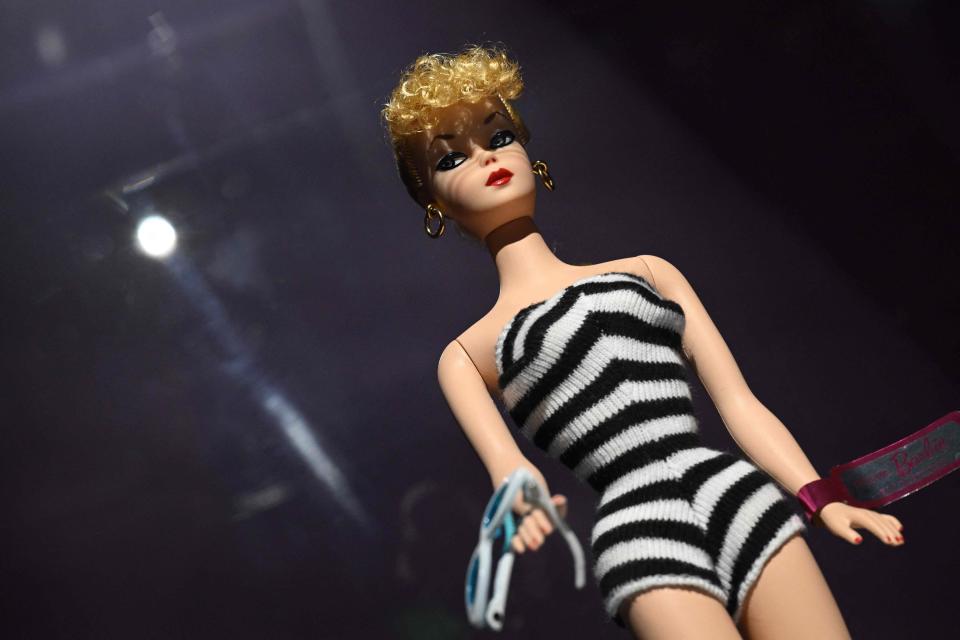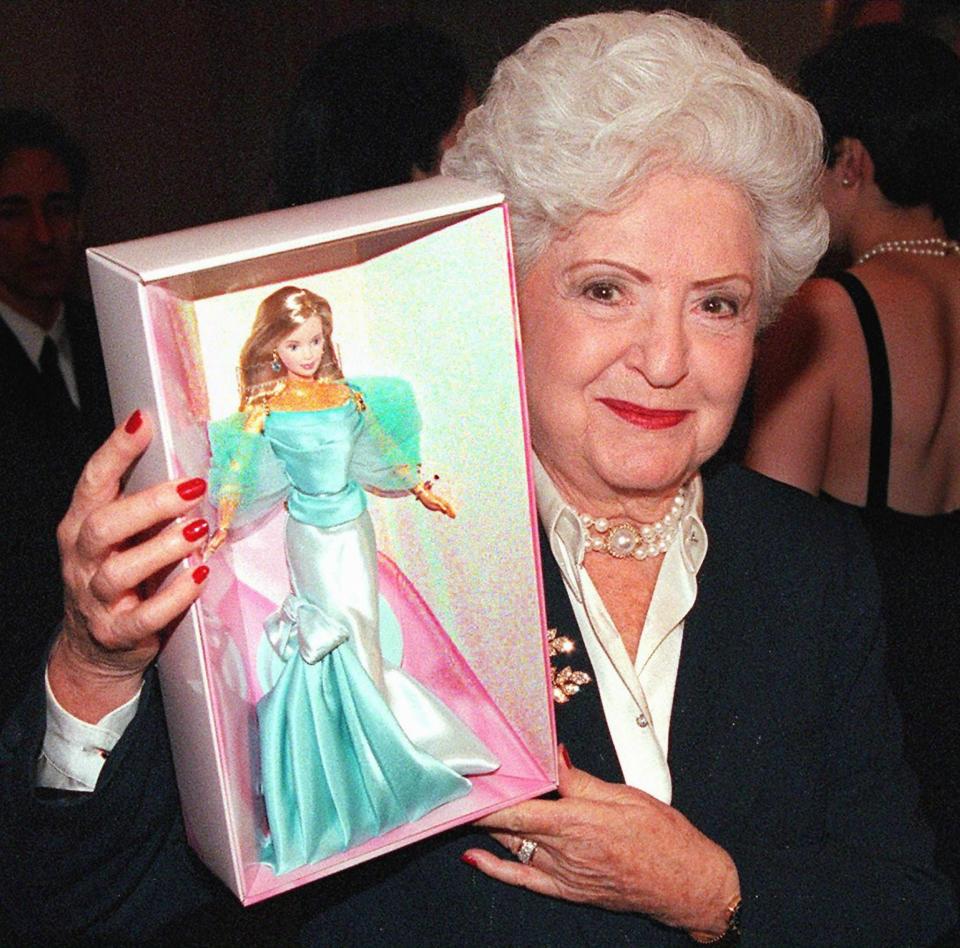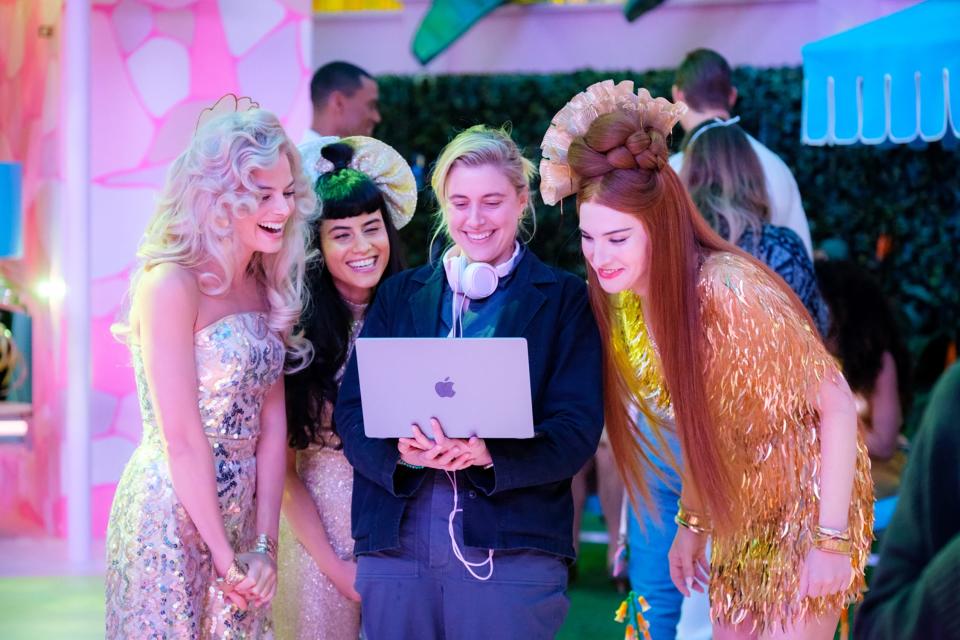'Barbie' ending: Greta Gerwig talks 'emotional' final line, creator Ruth Handler (Spoilers!)
Spoiler alert! The following contains details about the ending of "Barbie" (now in theaters).
There's no putting Barbie back in the box.
After an existential journey to Los Angeles, Barbie (Margot Robbie) successfully restores balance to Barbie Land, which is taken over by patriarchal Kens in the film's sharply satirical third act. But like Frodo at the end of "The Return of the King," Barbie no longer feels at home in her cozy, familiar world. Eager for human emotions and experiences, she decides to leave the valley of the dolls and embark on a new life in California.
And with some gentle guidance from her inventor, Ruth Handler (Rhea Perlman), Barbie chooses to accept mortality and become a person at the end of the movie, adopting the last name Handler for herself. Greta Gerwig, who directed and co-wrote "Barbie," tells USA TODAY about the real-life Handler and that brilliant closing moment.
'Barbie': Margot Robbie never thought she'd have 'empathy for a doll'
Greta Gerwig wanted to end the 'Barbie' movie with a 'mic drop'
In the last scene, genial Mattel employee Gloria (America Ferrera) and her daughter, Sasha (Ariana Greenblatt), drop Barbie off at an office building for what seems to be a job interview. Anxious but excited, Barbie walks through a waiting room to a receptionist's desk, beaming as she says the movie's final line, “I’m here to see my gynecologist.”
“With this film, it was important for me that everything operated on at least two levels,” Gerwig says. “I knew I wanted to end on a mic drop kind of joke, but I also find it very emotional. When I was a teenage girl, I remember growing up and being embarrassed about my body, and just feeling ashamed in a way that I couldn't even describe. It felt like everything had to be hidden.
“And then to see Margot as Barbie, with this big old smile on her face, saying what she says at the end with such happiness and joy,” Gerwig continues. “I was like – if I can give girls that feeling of, 'Barbie does it, too' – that’s both funny and emotional. There are so many things like that throughout the movie. It was always about looking for the levity and the heart.”
'Barbie' review: Margot Robbie, Ryan Gosling dazzle in hilariously heady toy story

Barbie creator Ruth Handler wanted the doll to be aspirational
Ruth Handler, who first appears as a character midway through "Barbie," co-founded Mattel in 1945. She got the idea for Barbie after watching her young daughter, Barbara, play with paper dolls of adult women. Given the popularity of baby dolls at the time, Handler viewed Barbie as an aspirational alternative: a toy to help girls envision lives and careers aside from being mothers and homemakers.
“Ruth saw that little girls wanted to play at being big girls,” says Robin Gerber, author of “Barbie and Ruth.” “She described it as a toy that would allow girls to imagine being whatever they wanted to be.”

The first Barbie was released in 1959 and became an instant success. But the doll was also controversial for her small waist and large bust ? features inspired by the German fashion doll Bild Lilli. Handler found Bild Lilli during a trip to Hamburg and used her as a model for Barbie.
“If that doll had smaller breasts, I think Barbie would have had smaller breasts,” Gerber says. “It’s an accident of history.”
In Handler's 1994 book "Dream Doll," she wrote that some Mattel designers were "squeamish" about a doll with breasts, but she stood her ground.
"Every little girl needed a doll through which to project herself into her dream of her future,'' Handler told the New York Times in 1977. ''If she was going to do role playing of what she would be like when she was 16 or 17, it was a little stupid to play with a doll that had a flat chest. So I gave it beautiful breasts.''
More: Is the 'Barbie' movie appropriate for kids? Here's what parents should know

Handler's breast cancer battle inspired her second career
In a cruel irony, Handler was diagnosed with breast cancer in 1970 and underwent a double mastectomy. She left Mattel in 1974, and two years later, started a new company called Nearly Me, making breast prosthetics for women post-mastectomy.
"She invented inserts into a bra that you could put on after you've had a double mastectomy, so you could still feel like yourself," Gerwig says. "That felt beautiful and poetic. Barbie has always been held up to be a sort of unrealistic physical ideal: impossibly beautiful, and impossible to achieve for a mere mortal. I thought, ‘That is so interesting because the woman who created her physically went through a transformation in a completely different direction.’ "
It's a poignant reminder that "Barbie is something that was invented," Gerwig adds. "(Handler) is not Barbie. Margot's not Barbie. Nobody's Barbie."

Using silicone and foam, the Nearly Me prosthetics were designed to be both comfortable and confidence-boosting. Handler staffed the company almost entirely with women who had undergone mastectomies.
"In the early '70s, women were made to feel like criminals for having had breast cancer. It was very much hidden from your friends," Gerber says. "She went out to major companies like Neiman Marcus and Bloomingdale's, and said, 'You have to set up a separate salon for women who’ve had mastectomies, and they will be fitted for these and they will be treated with respect.'
"She had a very clear idea of wanting to not just give women a product, but give them back their dignity."
The 'Barbenheimer’ phenomenon: How a movie meme inspired the 'crazy, weird' double feature
This article originally appeared on USA TODAY: 'Barbie' movie ending spoilers: Greta Gerwig on 'emotional' last line
